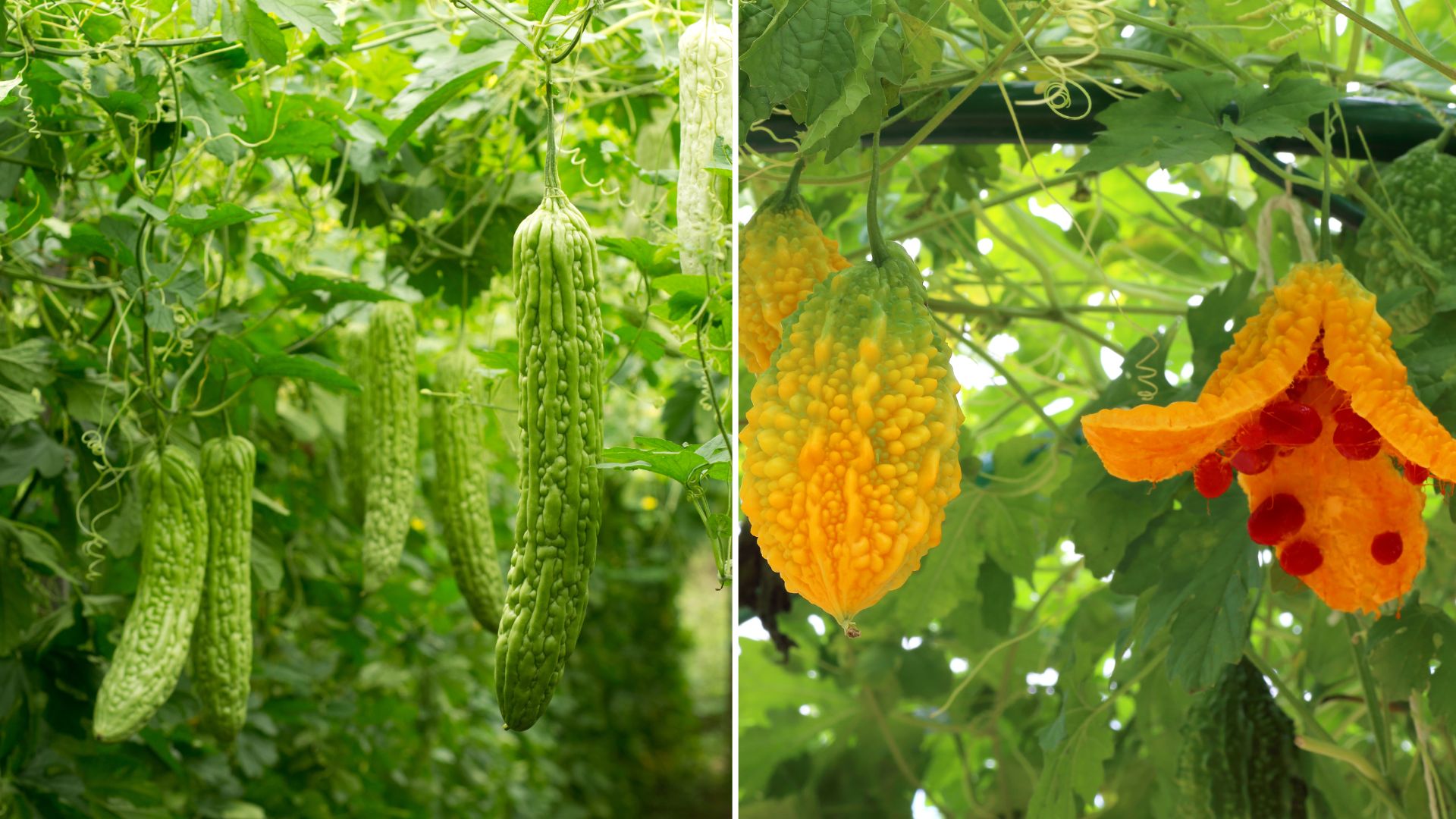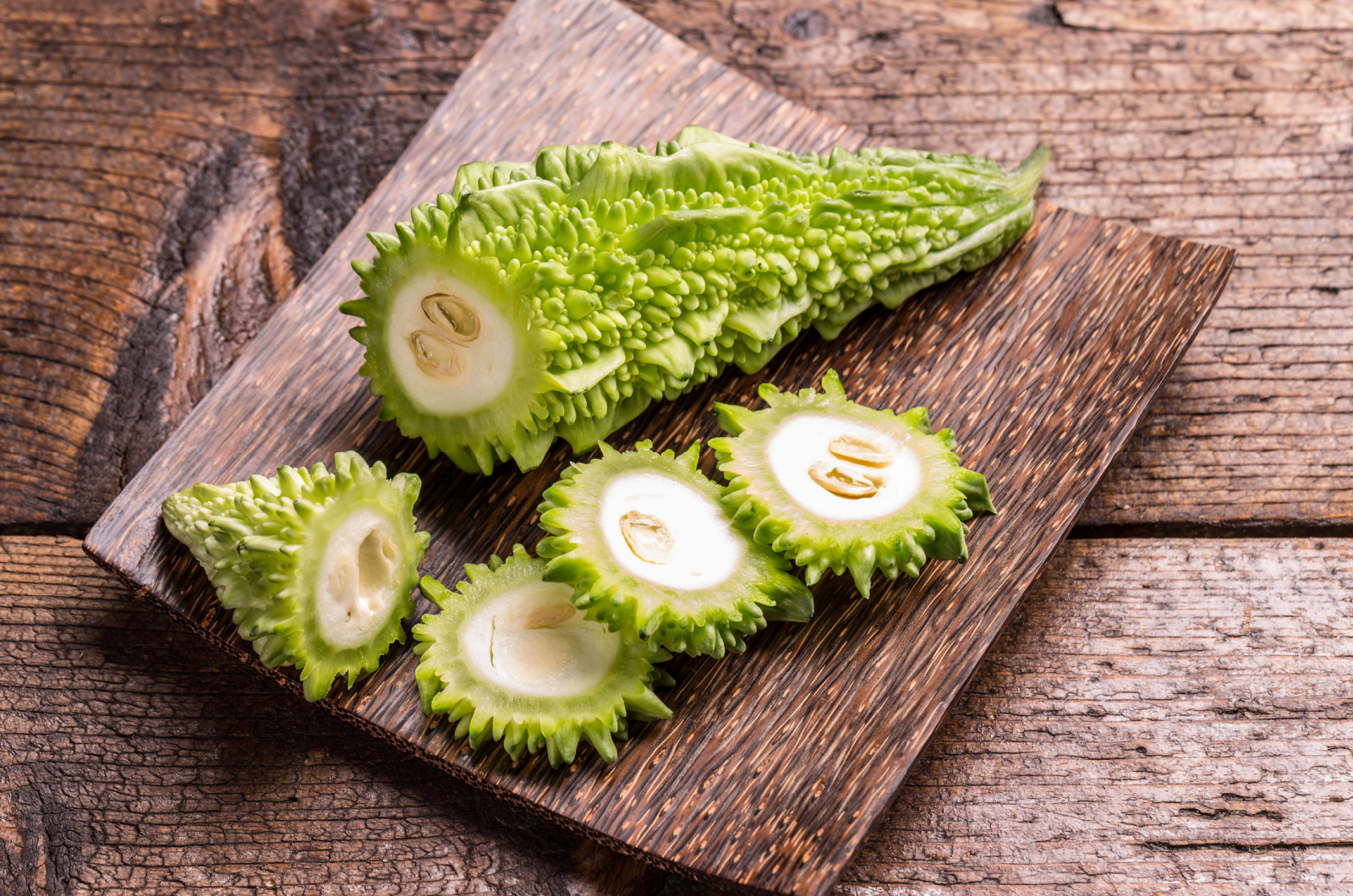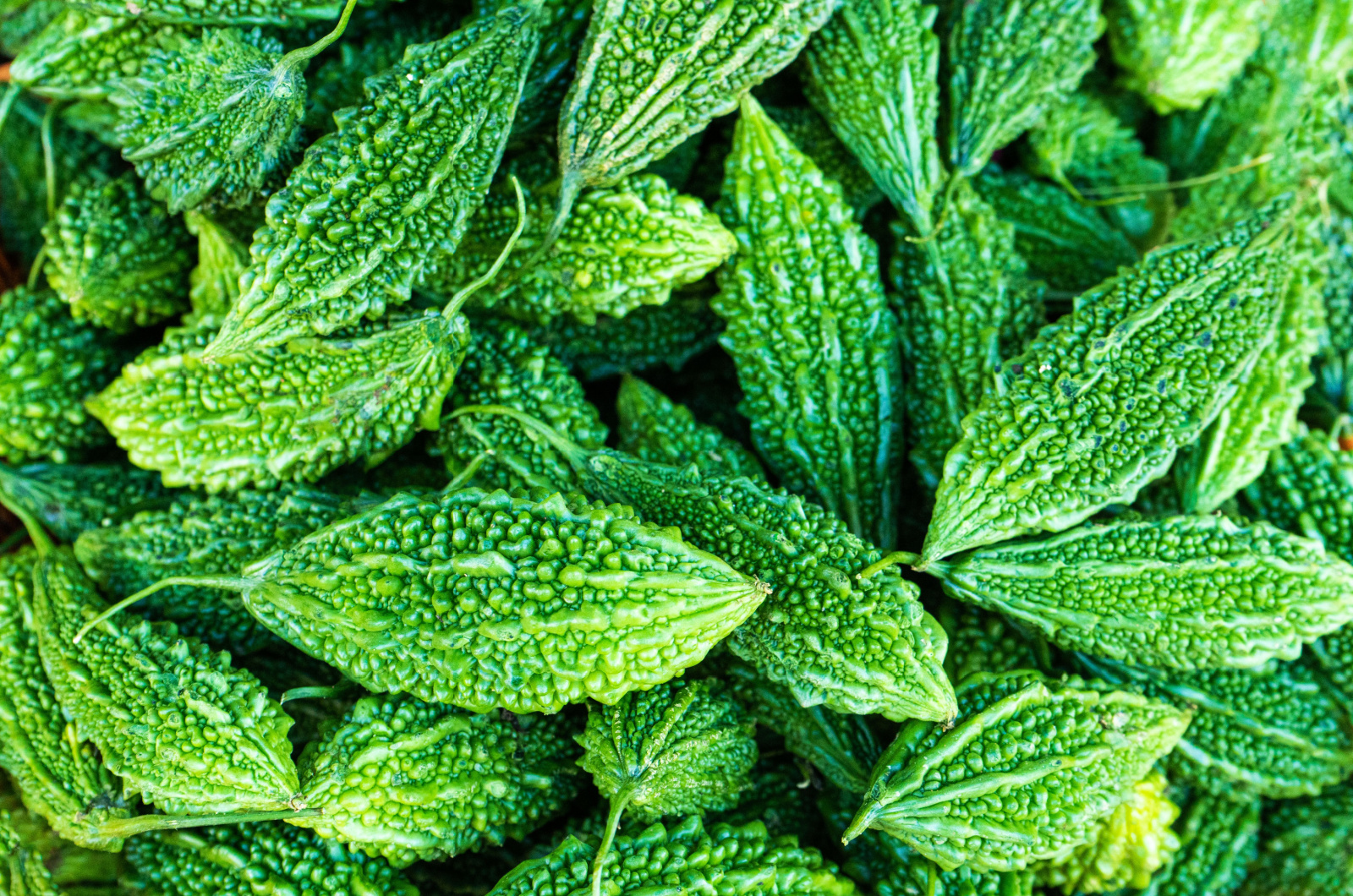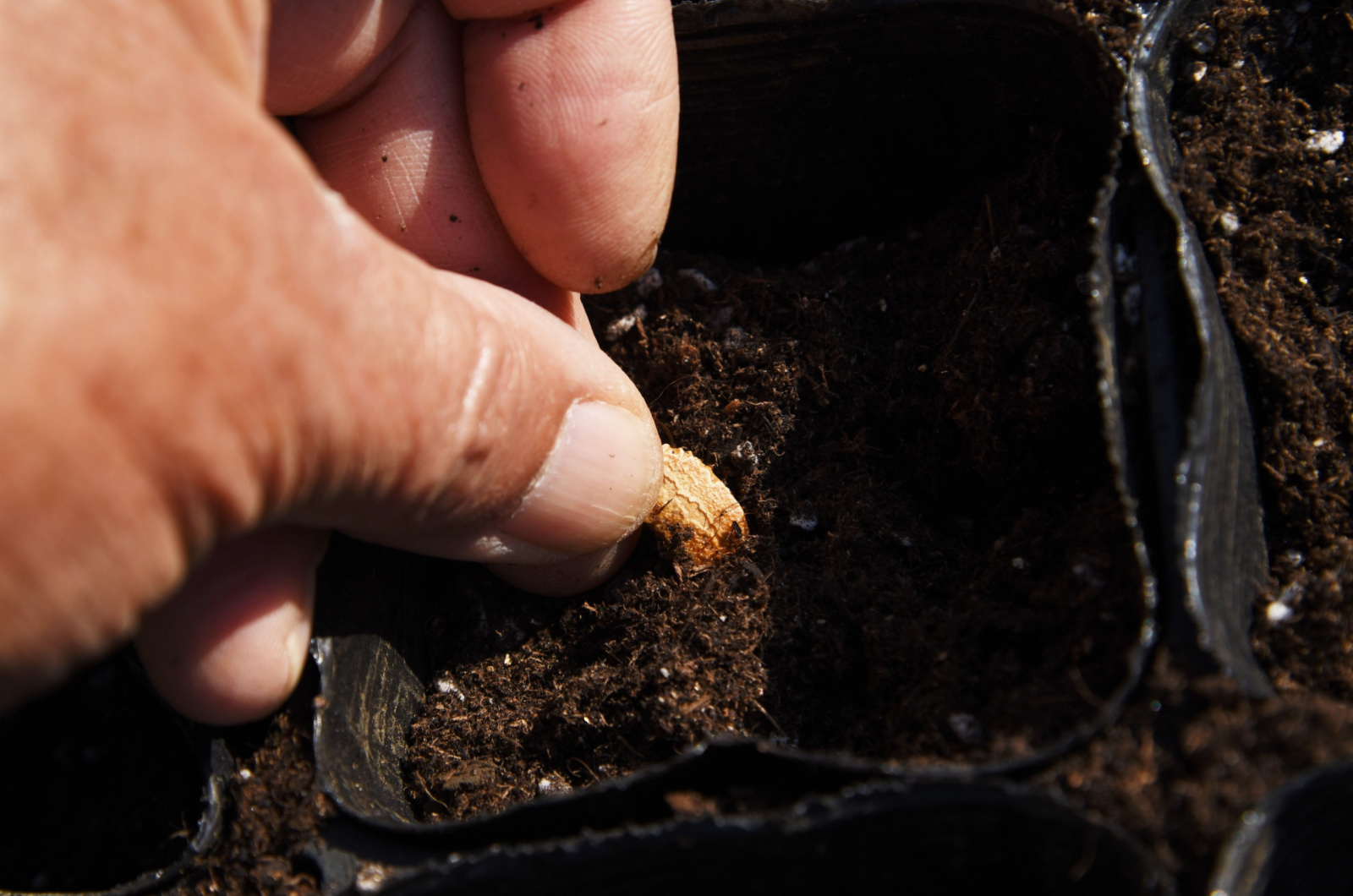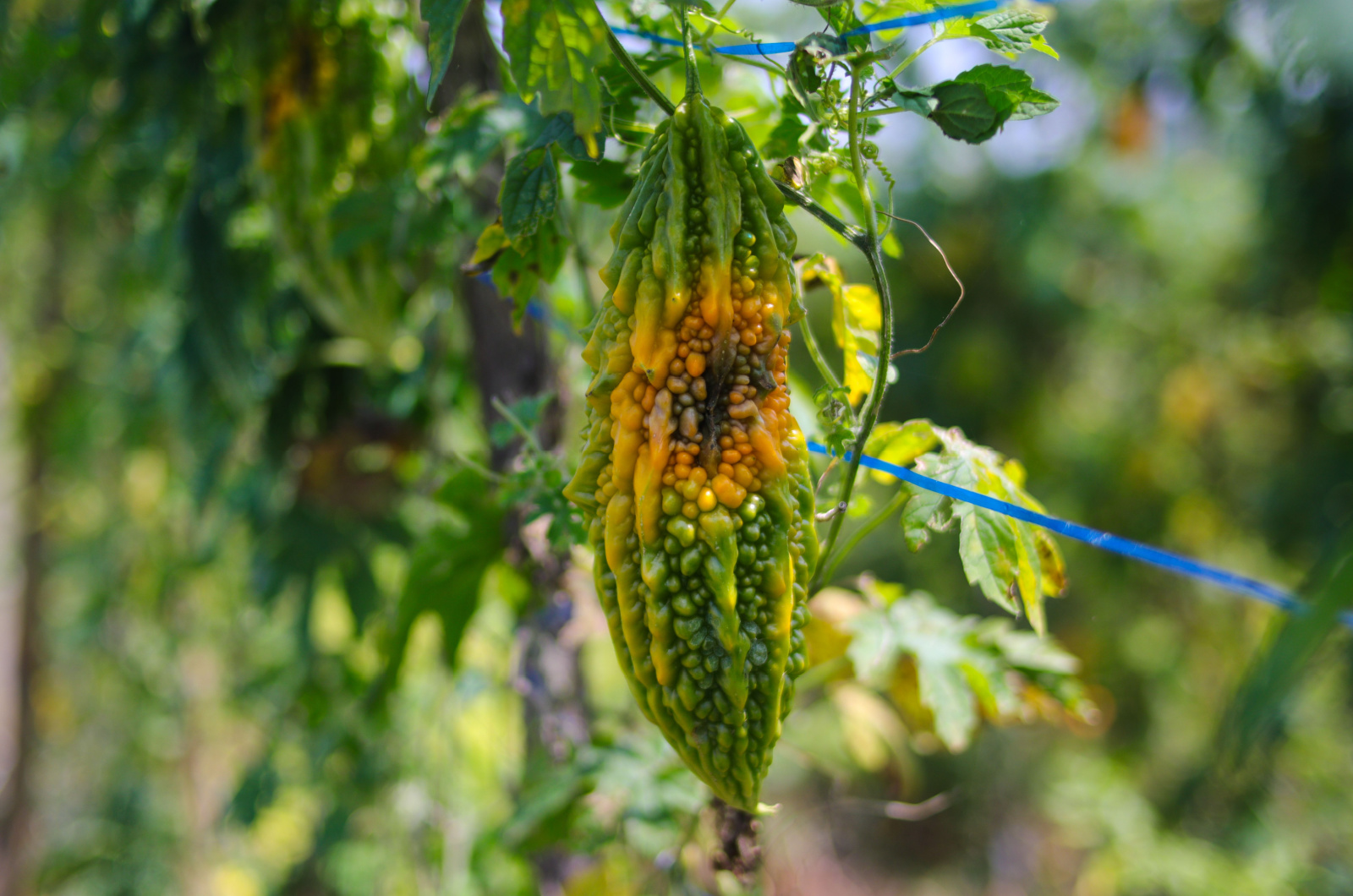Have you ever heard of bitter melon? This fruit has gained popularity in the last couple of years but it’s still pretty unknown compared to its sweet cousins.
Well, if you haven’t tried it yet, you can guess what it tastes like. Yes, it’s a bitter fruit that makes an excellent addition to many dishes.
The only problem is that the fruit is often unavailable in supermarkets, so the best solution is to add it to your garden.
Don’t worry, I’ll show you how to grow bitter melon in detail, from planting to harvest!
Let’s get started!
More About Bitter Melon
This plant belongs to the Cucurbitaceae family just like cucumbers, squashes, melons, and zucchini. However, it belongs to the separate genus known as Momordica. Interestingly, the name of this genus comes from Latin and translates to ‘to bite’.
When observing the leaves of bitter melon, you’ll notice that they’re serrated and look like someone has taken bites out of them.
Bitter melon comes in white or different shades of green and has crisp flesh and a bumpy appearance.
Surprisingly, both leaves and fruits are edible and taste bitter, so if you’re a fan of this flavor, bitter melon is the perfect plant for you.
The plant originates from Africa but it can also be found all across East, South, and Southeast Asia as well as the Caribbean.
This species also goes under the names bitter squash, balsam pear, and bitter gourd. The most popular Chinese varieties of bitter melon are thought to have been developed in the 14th century.
Due to its enormous health benefits, bitter melon has found its way to the South American and Asian markets.
Best Varieties
Generally speaking, there are two main varieties of this cucurbit plant – Chinese and Indian. The first ones are larger and feature a bright green and smoother outer skin, whereas the latter has a spiky appearance with pointy ends.
Although Indian varieties are mostly deep green, some cultivars may come in white.
The bitter melons you see in markets (if you’re lucky enough) are predominantly Chinese varieties.
You know how it goes; different cultures, different flavor preferences. Some varieties may taste more bitter than others, while the bitterness level may also be affected by growing conditions.
Here are some recommended varieties.
1. Dark Jade: This variety originates from India and has a deep green outer skin. If you want a high yield of bitter melons, then Dark Jade is the perfect choice.
2. Futo Spindle: Originating from Japan, the Futo Spindle features a bumpy skin and is very similar to the Indian variety in appearance. I also recommend Okinawan Pure White, which is another Japanese variety renowned for its white and less bitter flesh.
3. Bitter White: This is actually a hybrid of Indian varieties and the fruits may reach 11 inches in diameter.
4. Green Skin Bitter Melon: This is the most popular Chinese variety and is most commonly used in the kitchen. Smooth Bitter Melon and Bitter green are also excellent choices for culinary delights.
Complete Bitter Melon Growing Guide
Let’s see what it takes to grow bitter melons from seeds to harvest!
How To Start Bitter Melon From Seeds
It may be pretty challenging to find the seedlings of Chinese varieties in nurseries until the spring, so the best you can do is start your bitter melons from seeds.
You need to follow each step carefully as seeds don’t germinate easily because of the hard outer casing. Always start bitter melon seeds approximately 3-4 weeks before the last frost date.
Here’s what you need to do.
1. Pour warm water into a bowl, add the bitter melon seeds, and let them soak overnight.
2. Take seed trays or small pots, fill them with seed-starting mix, and sow the bitter melon seeds at a depth of approximately ¾ inch. Place the seed trays on a heating mat or a warm radiator.
Cover the trays/pots with plastic lids or plastic bags to trap humidity.
3. If you don’t want to start the seeds in pots, you can lightly wet a paper towel and add a single layer of bitter melon seeds over it.
Fold the paper towel, put it in a zip lock bag, seal it, and place it in a warm room where temperatures are around 60 degrees Fahrenheit.
Once you notice the bitter melon seeds have started germination, transfer them into pots.
The good news is that things get way easier after successful germination. Now you should wait until the danger of frost passes and then harden off the bitter melon seedlings.
Simply allow the bitter melon seedlings to adapt to their new surroundings by taking them outdoors each day, prolonging the time they spend there.
How To Plant The Seedlings
First, prepare the soil by covering it with a 2-inch layer of compost. Make small holes in the soil and make sure there is about 12 to 18 inches of space between each one.
Insert the bitter melon seedlings in the holes and start staking. Even though it may look like juvenile plants don’t require staking, it’s easier to do it at this point.
These plants become too heavy as they reach maturity and start generating fruits, so it therefore becomes harder to handle them.
You can train your bitter melons to climb along the fence or make a trellis.
Perfect Growing Conditions
Here are the conditions you need to ensure for your bitter melons to thrive!
1. Temperature and humidity: These plants prefer hot and humid conditions and they need temperatures over 80 degrees Fahrenheit to start producing their delicious fruits.
2. Light exposure: Sun plays a major role in bitter melon development so make sure they receive at least 6 hours of direct sunlight per day. If you live in a hot climate, you can keep your bitter melons in a partially shaded spot.
3. Soil conditions: Bitter melons are hungry plants so the soil must be fertile and enriched with organic matter. Additionally, it has to retain enough moisture but should be well-draining to avoid rotting.
4. Watering schedule: Your main goal is to keep the bitter melon soil moist but never waterlogged. It’s better to leave the soil on the drier side than to allow water to accumulate and attract pathogens that cause root rot.
You can expect your bitter melons to start producing fruits in approximately 55-70 days, depending on the variety.
Pests & Diseases Management
One of the best things about bitter melon plants is that they’re pest-free. Striped cucumber beetles enjoy feeding on cucurbit plants but it seems that bitter melon is an exception.
Larger garden invaders, such as rabbits, deer, and squirrels also stay away from these plants and I believe bitterness of the leaves and fruits is the main cause.
This is actually one of the reasons why some growers keep these plants near borders; you get delicious fruits and deter little critters.
However, the story about diseases is a little bit different. Downy mildew may occur in your bitter melons during heavy summer rains and high humidity.
If you notice yellow spots on the surface of the leaves and powderish substance on the undersides, you should increase the airflow by pruning the leaves.
Tips For Harvesting
If you provide it with the right conditions, your bitter melon will reward you with a high yield. Believe it or not, you’ll have a fruit to pick every two days.
You should be careful about the ripeness of the fruits because it takes little time for the baby fruits to reach maturity and become overripe. If the fruit turns orange or yellow and becomes mushy, it’s overripe.
But if you want to save the seeds of your bitter melons, you should allow the fruits to over ripen.
If you want to eat them, then pick them when they’re glossy, firm, and have a full shape. You don’t need any special equipment to harvest these plants; simply pluck the fruits off the vines.
If you can’t eat all of them at once, put your bitter melons in plastic bags and keep them in the fridge for up to 1 week.
That’s it! Just follow these guidelines and enjoy tasty, homegrown bitter melons!

